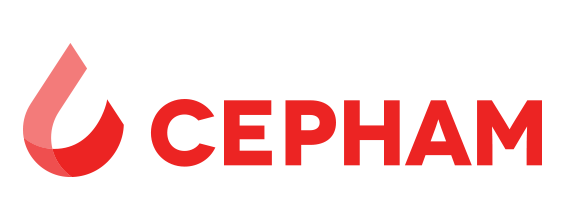August 27, 2025, implementation of a 50% tariff on Indian imports threatens to fundamentally reshape the dietary supplement ingredient industry, with the most severe impacts arriving in Q1 2026 when buffer stocks deplete and consumers face unprecedented price increases for herbal supplements. The tariff, combining a 25% reciprocal duty with an additional 25% penalty for India’s Russian oil purchases, creates 50-55% effective rates on botanical ingredients that cannot be sourced elsewhere due to India’s unique climate advantages and 5,000 years of cultivation expertise. While some importers successfully stockpiled 6+ months of inventory, many brand owners and contract manufacturers caught unprepared, setting up a two-speed crisis where prepared companies maintain competitive advantages through mid-2026 while others face immediate margin compression and potential stockouts.
The dietary supplement industry’s post-COVID boom, which saw >18% growth in plant- based products from 2020, now faces its greatest supply chain disruption. India dominates the global Ayurvedic herb market, producing 78% of the world’s turmeric and maintaining exclusive cultivation of critical ingredients like Ashwagandha, Boswellia, Bacopa, and likes. With 40% of US dietary supplement herb imports originating from India, the tariff impact extends far beyond simple price increases to threaten the fundamental availability of traditional herbal supplements that more than 70% of Americans now use regularly.
India’s botanical monopoly defies quick fixes
The dietary supplement industry’s dependence on Indian botanical ingredients stems from irreplaceable geographical and cultural advantages that make alternative sourcing virtually impossible in the near term. India’s tropical monsoon climate, with its specific temperature ranges of 30-42°C and annual rainfall of 1,500-2,250mm, creates growing conditions that cannot be replicated in North America or most alternative locations. The country cultivates over 6,500 medicinal plant species, including 40-45 turmeric varieties that provide crucial genetic diversity for maintaining potency and therapeutic effects.
Beyond climate, India’s 5,000-year tradition of Ayurvedic cultivation has created a skilled workforce with generational knowledge of harvest timing, processing methods, and quality optimization that new growing regions cannot quickly replicate. When alternative growing locations are attempted, research consistently shows lower bioactive content and reduced therapeutic potency, with production costs running 200-300% higher than Indian sources.
The specific herbs at risk read like a who’s who of the supplement industry’s bestsellers. Ashwagandha, part of top 10 herbs sold in the USA, requires dry conditions with specific soil alkalinity found primarily in Madhya Pradesh and Rajasthan. Boswellia serrata, essential for joint health formulations, grows only in India’s rocky semi-arid regions under government-monitored wild collection programs. Premium turmeric varieties like Alleppey and Lakdong achieve their high curcumin content only in Kerala and Tamil Nadu’s unique soil conditions. These aren’t commodities that can be quickly sourced from Vietnam or Mexico, they’re region-specific botanicals whose quality directly depends on their origin.
The buffer stock divide reshapes industry competition
The supplement industry’s response to tariff threats reveals a stark divide between companies that anticipated disruption and those caught unprepared, creating competitive dynamics that will persist through 2026. Successful preparation came primarily from importers and distributors who began stockpiling well before tariffs took effect.
The unprepared category includes brand owners and contract manufacturers who relied on just-in-time inventory management or lacked capital for significant stockpiling. This divide reflects deeper structural differences: importers maintain 3~6 month buffers as standard practice and have established relationships enabling bulk purchasing, while smaller brand owners operate on thinner margins that limit their ability to absorb inventory costs.
Standard industry lead times of 6-10 weeks from India and 4-8 weeks from China meant that companies needed to act by early summer 2025 to build adequate buffers. Those who did are now sitting on inventory purchased at pre-tariff prices, providing them with 6-12 months of competitive advantage as competitors face immediate cost increases of 50-55% on botanical ingredients.
Q1 2026 marks the industry’s moment of truth
The first quarter of 2026 emerges from our timeline analysis as the critical inflection point when theoretical tariff impacts become market reality. Companies that built 3-6 month buffers in mid-2025 will see these stocks depleted precisely when seasonal demand peaks, as Q1 traditionally experiences increased supplement sales from New Year health resolutions and weight management goals. The convergence of depleted inventories, seasonal demand spikes, and 6-16 week lead times for new orders creates a perfect storm for supply disruptions and price shocks.
The mathematics of depletion are unforgiving. Companies that frontloaded inventory in Q1 2025, when import volumes increased 11%, bought themselves roughly 9-12 months of buffer. With tariffs implemented August 27, 2025, these stocks will run dry between November 2025 and February 2026. New orders placed in Q4 2025 will arrive bearing the full 50% tariff burden, forcing companies to choose between absorbing costs that could eliminate profit margins or passing increases to consumers already sensitized to inflation.
The exemption list provides only partial relief. While Annex II exemptions cover basic vitamins (A, B-complex, C, E), amino acids, and CoQ10, saving companies cost over the initial 69-day period, botanical ingredients remain fully exposed to tariff impacts. This creates a two-tier market where companies heavily dependent on herbal formulations face existential challenges while those focused on exempt vitamins and minerals maintain more stable cost structures. The lack of botanical exemptions particularly impacts the Ayurvedic and herbal segments that drove much of the industry’s post-COVID growth.
Industry mobilizes extensive remedy efforts
The supplement industry has launched a multi-pronged campaign to mitigate tariff impacts, combining regulatory petitions, legislative lobbying, and operational adaptations. The NPA, CRN, UNPA, and AHPA – submitted comprehensive arguments to exclude dietary supplements from Section 232 pharmaceutical investigations. Their core argument: “dietary supplements are not pharmaceuticals” but rather food products serving 170 million Americans’ nutritional needs.
Operational responses vary by company size and sophistication. Some ingredient companies pursue dual strategies of inventory stockpiling combined with reshoring initiatives, shifting Asia-based manufacturing to US facilities using a “finishing process” approach – beginning manufacture overseas and completing in the US to avoid full tariff exposure. Smaller companies explore third-country processing through US Foreign Trade Zones, though 5-7 year timelines for developing domestic botanical production capacity make this a long-term rather than immediate solution. Indian exporters, facing potential 40-50% volume declines, seek government support including export credit enhancement, collateral-free lending, and urgent diplomatic engagement to resolve the crisis.
Economic aftershocks reshape global supplement trade
The tariff’s economic impacts ripple far beyond simple price increases, fundamentally altering competitive dynamics and trade relationships across the $185 billion global supplement market. For US companies, the Tax Foundation’s TAG model predicts GDP reduction of up to 1.0% when including retaliation effects, with 630,000 full-time equivalent jobs at risk from trade disruptions. Small and medium supplement brands face an impossible choice between absorbing costs that eliminate profitability or passing increases to price-sensitive consumers, while large corporations leverage economies of scale to maintain competitive positions.
The impact on India proves equally severe, with multi-billion in exports to the US now subject to tariffs – representing 18~20% of India’s total export economy. Goldman Sachs estimates moderate decline in India’s GDP, with particularly acute impacts in labor-intensive sectors.

